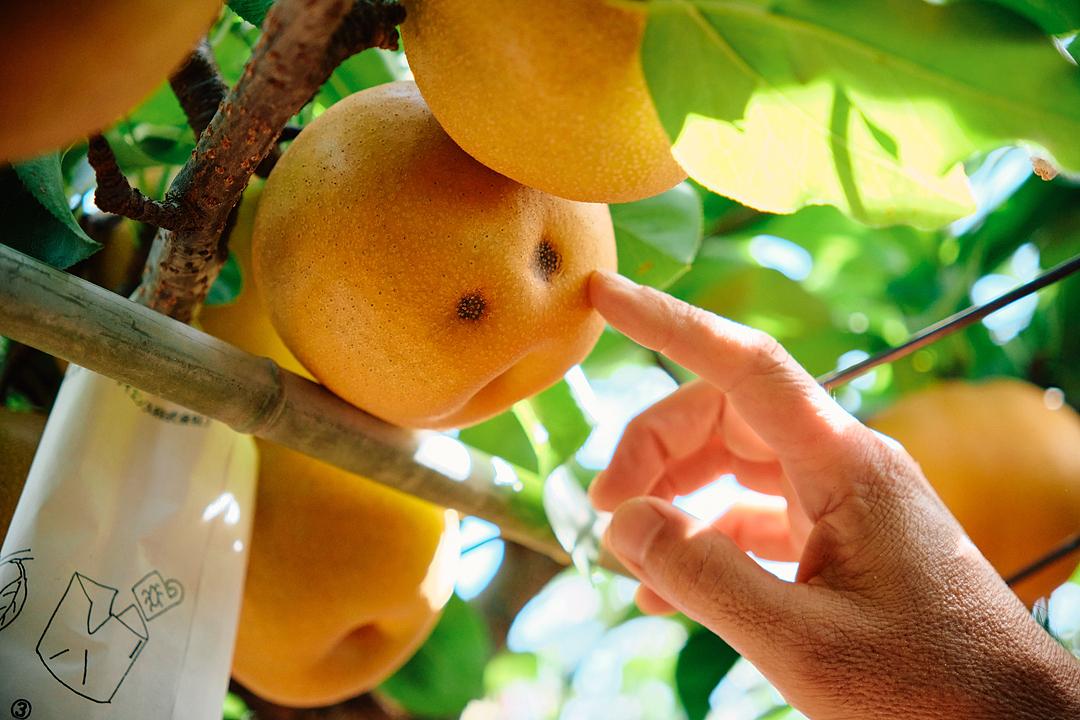Kirin Beer (Nakano, Tokyo) will release a limited-edition “Hyoketsu Mottainai Hamanashi” canned chuhai from its “Hyoketsu Mottainai” series starting August 19.
“Hamanashi” is not a pear variety name but a brand for pears produced in Yokohama, trademarked by the Yokohama Agricultural Cooperative in 2015. The main varieties are “Kosui” and “Hosui.” These pears are not shipped to markets but are sold directly at farms, allowing consumers to enjoy fresh, tree-ripened fruit immediately after harvest.
The “Hyoketsu Mottainai” series aims to reduce food waste and support farmers by using “imperfect” fruits—those edible but destined for disposal—as ingredients. These are referred to as “Mottainai Fruits.”
The packaging features the “Hyoketsu Mottainai” logo and diamond-cut designs symbolizing “Hyoketsu,” along with fruit illustrations, conveying a “fresh, innovative, and socially conscious” image. The back includes a QR code linking to a special website detailing the initiative.
The first product in the series, launched in May 2024, also used “Hamanashi” pears from Yokohama, Kirin Beer’s birthplace. This release is a reissue. The initial launch sold approximately 270,000 cases (150% of the target) and reduced food waste by around 34,000 “Hamanashi” pears, praised for their “bursting juiciness” and social contribution.
For each product sold, ¥1 is donated. The previous campaign contributed ~¥6 million to the Yokohama Agricultural Cooperative for sustainable “Hamanashi” production, such as purchasing saplings. The series has donated ~¥11.65 million to Japanese fruit farmers overall.
The project aims to make “imperfect produce and food waste reduction a more accessible and positive choice.” This reissue targets reducing ~27,000 “Mottainai Hamanashi” pears, with broader goals by 2027: cutting 250 tons of “Mottainai Fruits” annually, engaging 100 producers, and involving 12 million participants through purchases or events.
Available in 350ml and 500ml cans nationwide, priced openly.
Kirin Beer
Kirin Beer is a renowned Japanese beer brand founded in 1888 in Yokohama, originally established as the Japan Brewery Company. It became Kirin Brewery in 1907 and is now one of Japan’s oldest and most popular beer producers, known for its lagers and innovative brewing techniques. The brand combines traditional German brewing methods with local ingredients, playing a significant role in Japan’s beer culture.
Nakano
Nakano is a vibrant district in Tokyo, Japan, known for its shopping and pop culture. Historically a residential area, it grew into a commercial hub, particularly famous for Nakano Broadway, a shopping complex that became a haven for anime, manga, and otaku culture since the 1960s. Today, it offers a mix of traditional shops, modern entertainment, and a lively atmosphere.
Tokyo
Tokyo, the bustling capital of Japan, has a rich history dating back to the 12th century when it was a small fishing village called Edo. It became Japan’s political center in 1603 when Tokugawa Ieyasu established the Tokugawa shogunate there, and it was renamed Tokyo in 1868 when Emperor Meiji moved the imperial capital from Kyoto. Today, Tokyo is a global metropolis known for its cutting-edge technology, vibrant culture, and blend of traditional landmarks like Sensō-ji Temple with modern attractions like Shibuya Crossing.
Yokohama
Yokohama is a major port city in Japan, located south of Tokyo, known for its vibrant cultural mix and historical significance as one of the first Japanese ports opened to foreign trade in 1859. The city features landmarks like the iconic Yokohama Chinatown, the historic Red Brick Warehouse, and the futuristic Minato Mirai district. Its development as a cosmopolitan hub reflects Japan’s modernization and global connections in the late 19th and 20th centuries.
Yokohama Agricultural Cooperative
The Yokohama Agricultural Cooperative (Yokohama Nōgyō Kyōdō Kumiai) is a regional agricultural organization in Yokohama, Japan, that supports local farmers by promoting sustainable farming, distributing fresh produce, and fostering community ties. Established to strengthen the agricultural sector in the region, it plays a key role in connecting urban consumers with locally grown food while preserving traditional farming practices. While specific historical details are limited, such cooperatives in Japan have roots in post-World War II agricultural reforms aimed at improving food security and rural livelihoods.
Kosui
“Kosui” (香水) translates to “perfume” in Japanese, but it is also the name of a historic hot spring (onsen) town in Kumamoto Prefecture, Japan. Known for its therapeutic waters, Kosui Onsen has been a popular retreat since the Edo period (1603–1868), attracting visitors seeking relaxation and healing. The town retains traditional charm with ryokan (inns) and scenic surroundings, blending natural beauty with cultural heritage.
Hosui
Hosui (放水) is a historic water release system located in the city of Yanagawa, Fukuoka Prefecture, Japan. Originally developed during the Edo period (1603-1868) as part of Yanagawa’s extensive canal network, it was designed to control flooding and manage water flow for agriculture. Today, it is a cultural landmark, symbolizing the region’s innovative water management and traditional engineering.
Hamanashi
Hamanashi (浜梨) is not a widely recognized cultural or historical site, and there is limited information available about it. It may refer to a local place name in Japan, possibly a coastal area (“Hama” means beach, and “Nashi” can mean pear or without). Without more specific details, it’s challenging to provide a definitive summary of its history or significance. If you have a different location or spelling in mind, please clarify!






